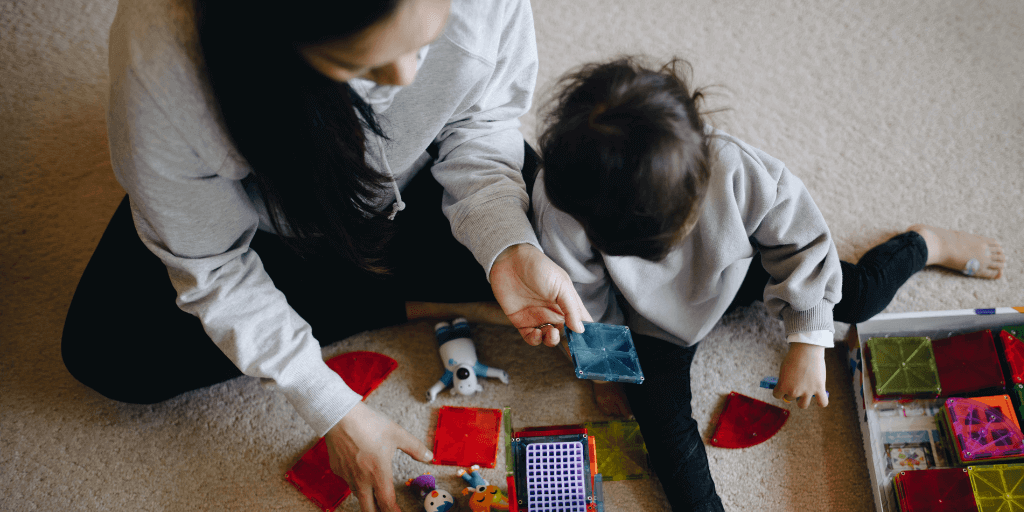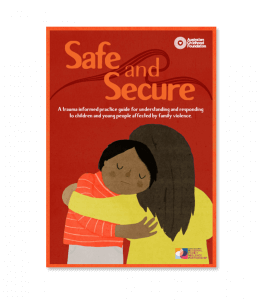
Keeping children at the heart of our work in family violence
‘Keeping children at the heart of our work in family violence’ blog article was written by Angela Weller, Lead – New Training and Resource Development at Australian Childhood Foundation.
In recent weeks the Australian Federal, State and Territory governments released the National Plan to End Violence against Women and Children 2022-2032. This plan contains a central commitment to acknowledge children and young people as victim-survivors in their own right:
“A child’s worldview is shaped by the violence they see, hear and experience each day. These experiences affect their perception and understanding of the world, which can have long-term and ongoing impacts.” (National Plan to End Violence against Women and Children 2022-2032)
This acknowledgement of a child’s unique experience of family violence is an important understanding and commitment to them.
It is also a commitment that the Australian Childhood Foundation (the Foundation) stands by, articulated in the Safe and Secure Practice Framework developed in 2013 within a multi-agency Eastern Metropolitan Regional Family Violence Partnership (EMRFVP). This community partnership works to strengthen the coordination of responses being offered to women, children and men within the family violence service system in Victoria.
 The Safe and Secure Practice Guide was developed to capture the key principles of the Safe and Secure Practice Framework and as an acknowledgement that children and young people are affected by the impact of family violence in their own right. They are harmed by seeing and hearing the violence and its effects. Children and young people are caught up in the cycle of violence. They are frightened by it. They are diminished by it, and their development is adversely affected by it. They struggle to make sense of why the violence occurs and what it means. Many children continue to experience forms of the violence even after it is described as having ended
The Safe and Secure Practice Guide was developed to capture the key principles of the Safe and Secure Practice Framework and as an acknowledgement that children and young people are affected by the impact of family violence in their own right. They are harmed by seeing and hearing the violence and its effects. Children and young people are caught up in the cycle of violence. They are frightened by it. They are diminished by it, and their development is adversely affected by it. They struggle to make sense of why the violence occurs and what it means. Many children continue to experience forms of the violence even after it is described as having ended
“The trauma of family violence for children causes multiple layers of harm. It damages their development. It isolates them from important relationships of support and care. It makes learning hard. It makes friendships complicated. It deteriorates their memory. It keeps them in heightened states of alarm and terror. It stresses their bodies and floods their brains.” (Safe and Secure Practice Guide)
The Practice Guide is oriented towards the support of children, with a belief that responses to supporting them should uphold their safety in an enduring way. The knowledge is trauma-informed, and the principles and strategies focus on providing systems that offer comfort, hope and safety in children’s experiences of relationships.
The knowledge in the Safe and Secure Practice Guide has been influential in shaping service delivery and made available as a widely used resource. It has been at the heart of practice development in the EMRFVP, and therapeutic programs at the Foundation. It has also been translated into a professional development workshop, which has been delivered to thousands of professionals nationally.
More recently, the Safe and Secure Practice Framework was used to underpin the development of the Trust, Safety and Participation Practice Guide, a framework commissioned by the Government of Western Australia offering practice considerations for children and young people within a pandemic context.
The Safe and Secure Practice Guide draws on the stories of children and young people, with an invitation to understand the impact of violence on them, as well as apply the framework in planning their protection and recovery. In understanding the worlds of Jack, Sophia and Sayad, we are able to make meaning of the violence and consider relationships and strategies to offer experiences of safety and healing.
“Safety is achieved through collective action around children. It requires adults to work in concerted effort with a shared commitment to meeting the unique configuration of needs of children affected by family violence. It is in the depth of understanding that arises when trauma is used as an explanatory framework that transformation is made possible for children, mothers, and those who perpetrate family violence.” (Safe and Secure Practice Guide)
The Practice Guide has been redesigned with revitalised imagery of children and young people within relationships and communities that are oriented to their support and recovery. The EMRFVP remains committed to incorporating the ideas of the framework in its professional education and advocacy. The framework also continues to be integrated into service delivery through organisations that are part of the EMRFVP alliance.
In the context of the recent national commitment to end violence against women and children, the Safe and Secure Practice Guide remains an important framework holding the protection and safety of children at its heart.
